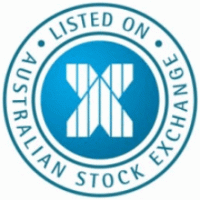
Chris Weston, Chief Market Strategist at IG Markets
Regardless of the near-term perception around European inflation, or US economic data and the subsequent impact on the Fed’s asset purchase program, the market is focused primarily on China and price action in iron ore, copper, steel and coal.
Asia is seeing greater volatility than other markets right now and many of the bears will be looking at this as a potentially defining moment for the Tiger economy and the commodity trade in general.Many of the key inputs for a trade which so many within China have profited from seem to be unravelling fairly quickly right before our eyes.
China’s bulk commodity futures finding buyers after an early fall
Spot iron ore saw much calmer price action yesterday, but futures re-opened 1.7% lower today. Shanghai copper opened up limit down (-5%), taking LME 3-month and CME copper down too. However, buyers have come into markets as the afternoon rolls on. We also saw the USD/CNY fix being pushed up 16 basis points, which is fairly small, but the trend behind these artificial fixings is higher and this continues to be a concern from a global economic perspective as it boosts China’s export capabilities, at the expense of others.
The weaker RMB is actually part of the problem behind the weaker iron ore and copper price, as China is a major importer of these commodities, and a weaker currency subtracts from the purchasing power of these importers. Many of the people who would have used commodities as collateral to get RMB from the shadow banking institutions would have invested the funds in very high yielding wealth management products. So when we see the PBoC lower the RMB through its daily ‘fix’ this effectively lowers the profit they can ultimately make, especially as many will want to convert back to USDs further down the line. Thus buying back USD’s will be more expensive.Many people will ask how this money made its way into China in the first place, and some will subsequently suggest this as real reason behind the anomalies in the export numbers over the years.
Clearly the other major issue is around the concern about heightened default in China and while many (including myself) saw last week’s corporate bond default by Chaori Solar Energy as a longer-term positive, the fact that we saw another Chinese solar firm having its bonds suspended from trading yesterday (due to its back-to-back annual losses) suggests this is actually having much larger ramifications on markets.This is true in the role of using commodities as collateral for sourcing financing from the shadow banking committee, and it has been speculated that anywhere between 60% and 80% of China’s copper imports of late have been used for financing. If correct, it effectively throws into dispute the role of Dr Copper as a barometer of the Chinese economy.
Certainly we’ve seen Japan under sizeable pressure, while the Kospi, Hang Seng and ASX 200 have also found good selling pressure too. There’s been a very modest unwind of the carry trade with USD/JPY pulling under the 103 handle and the fate of other developed markets hinges on the path of USD/JPY.
As we know there is still a huge amount of funds who are short JPY and a real escalation of concern could have ramifications on the JPY, and in turn cause issues in emerging markets.
Volatility indicators not painting a picture of concern
Some of the more bearish traders are suggesting that this has the hallmarks of something more ugly and it’s interesting to see that corporate and sovereign credit default swaps (CDSs) and even options volatility in the forex market are not really moving at all. Perhaps this fits into the complacency aspect that we’ve been seeing for some time, but if we see these move higher then watch developed market equities drop.
The AUD/USD was looking fairly constructive last week; breaking above the neck line of the inverse head and shoulders pattern that in theory could have targeted the 95c level. However the tables have turned and the spot price is now testing the January uptrend and 38.2% retracement of the rally at 0.8952. Buyers do seem to be supporting here and perhaps this is testament to the A$7 billion 2026 Australia treausry auction, which was the largest on record.
In the Australian equity market we’ve seen weakness in banks, but, rather perversely, the miners have held up quite well. Gold stocks have found support, with spot gold breaking the May 2 downtrend at $1350, and a further break of the October 28 high of $1361 would be another positive development.
US futures are only down a touch despite the price action in Asia (excluding China) looking fairly ugly; however our European calls are firmly in the red. Data for the session ahead is light, with Spanish inflation and European industrial production in play. It’s worth bearing in mind that the RBNZ rate decision is announced in early Asia trade tomorrow and from a pure risk/reward stand point it perhaps favours being short here, as this may be one of those moments when a central bank hikes but the currency actually falls. With 135 basis points of hikes being priced into the market over the coming 12 months, if the RBNZ don’t give the impression in the statement that this will materialise it’s hard to see significant upside in the NZD.